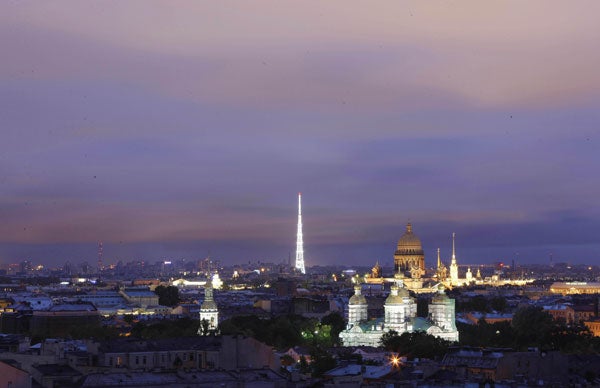Whatever the weather: Rain and snow for 190 days a year – then summer sun transforms St Petersburg

Your support helps us to tell the story
From reproductive rights to climate change to Big Tech, The Independent is on the ground when the story is developing. Whether it's investigating the financials of Elon Musk's pro-Trump PAC or producing our latest documentary, 'The A Word', which shines a light on the American women fighting for reproductive rights, we know how important it is to parse out the facts from the messaging.
At such a critical moment in US history, we need reporters on the ground. Your donation allows us to keep sending journalists to speak to both sides of the story.
The Independent is trusted by Americans across the entire political spectrum. And unlike many other quality news outlets, we choose not to lock Americans out of our reporting and analysis with paywalls. We believe quality journalism should be available to everyone, paid for by those who can afford it.
Your support makes all the difference.St Petersburg is situated along the shores of the Neva Bay in the Gulf of Finland; it has a continental climate, moderated somewhat by the Baltic Sea. Because of the city's northerly latitude it experiences a huge variation in daylight hours during the year, ranging from six – in midwinter – to 19 hours a day. Twilight may last all night in early summer, from mid-May to mid-July, and this celebrated time is known as the White Nights.
St Petersburg experiences warm, humid and short summers. The average daily temperature in July is 22C, while the record sits at 37C, set during last summer's heat wave.
Hot sunny days are not rare, but you never know when it is going to rain. (The locals are prone to joke that "I missed summer this year as I was working that day".) July is the hottest month of the year and temperatures start to fall away by the middle of August.
It is frost-free in the city for only about four months of the year. The weather during spring and autumn is quite variable and very dependent on the wind direction.
From early April, temperatures start to rise above freezing and the snow and ice starts to disappear. It can remain chilly until the middle of May when the strength of the sun becomes more noticeable. The start of autumn remains reasonably warm with the average temperature for September being 12C but by mid-October it begins to feel chilly as temperature creep back down towards freezing.
The winter in St Petersburg is long and cold – but then the winter is long and cold across most of Russia. Temperatures regularly fall as a low as –12C but it is not unusual to record –20C. The River Neva, which passes through the city, usually freezes up during the winter and it can take until April before its starts to thaw. Biting Arctic winds and snowfall make this a harsh climate; it rains or snows on average 190 days each year.
Dr Liz Bentley is founder of the Weather Club, formed by the Royal Meteorological Society to promote an appreciation and understanding of the weather. Visit theWeatherClub.org.uk for more information.
Join our commenting forum
Join thought-provoking conversations, follow other Independent readers and see their replies
Comments